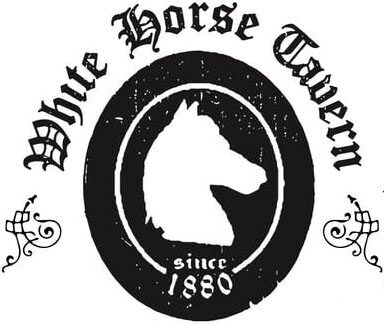How do you visualize green? Money? Sure. Kermit, the frog? Sure. But Dylan Thomas only sees one thing: youth. Certainly, based on his “Fern Hill” poem. Thomas wrote the poem in the Summer of 1945 at the end of the Second World War as a nostalgic look back at his childhood.
“Fern Hill” refers to a house where Dylan Thomas’ aunt, Ann, lived in Carmarthenshire, West Wales. Thomas tries to understand youth and innocence by reflecting on his childhood. Bible references and dreams are mentioned. Thomas uses pastoral imagery to connect peace, quiet, and nature with happiness.
In the first three stanzas, the poet describes his childhood experience. Running through the countryside was Thomas’ favorite outdoor pleasure. But the last three stanzas paint an awakening in the child, which signifies the loss of the world of innocence—the poet talks about how unaware he was of the passing of his youth.
Here is the White Horse Tavern “Fern Hill Analysis”
Fern Hill by Dylan Thomas
” Fern Hill” is a six-stanza poem that celebrates and then laments Dylan Thomas’ youth spent at the Fern Hill estate.
First Stanza
The speaker introduces the landscape with the “lilting” house: it is so alive and vivid that it almost becomes a character.
Time is also personified, almost becoming a playmate to the young boy as he journeys through the world. Using the phrase “once below a time” emphasizes Thomas’ concept of time as the speaker is only a guest in time’s domain and immediately brings to mind fairy tales that begin with “once upon a time.”
Second Stanza
Dylan Thomas writes “in the sun that is young once only,” giving away his fleeting innocence.
“Time let me play and be Golden in the mercy of his means,” Alludes that time “lets” him play, but it remains in charge. “And the sabbath rang slowly in the pebbles of the holy streams.” The line infuses “Fern Hill” with a sense of sacredness with references to the Sabbath and “holy” water
The second stanza has the first of many Christian references that will grow in the poem over time. The colors green and gold also appear frequently.
Third Stanza
As the speaker recalls the beauty of Fern Hill both during the day and at night in the third stanza, the celebration of Fern Hill continues. The simplicity of his memory of Fern Hill — “it was air” — tells the story.
Air is essential for life, but it’s invisible nature is easy to overlook, just as the young narrator overlooks Fern Hill. As the poem progresses, the images become abstract and dreamlike, such as the “lovely and watery” adjectives and the unnaturally “green” fire. Again, green refers to life.
Fourth Stanza
These lines deepen the Christian imagery dramatically. The speaker alludes to the Biblical paradise of Eden in the fourth stanza by referring to “Adam and maiden.” His happiness at Fern Hill will soon end. After all, Adam and Eve were also exiled from Eden.
The speaker also refers to the Creation and its aftermath as “the birth of the simple light.” His mention of white here, “And then to awake, and the farm, like a wanderer white,” is associated with purity–symbolizing Adam and Eve before they fell.
Fifth Stanza
Again, Thomas uses personification in the fifth stanza as he speaks of the “gay house” and the “wishes” that “raced,” emphasizing the aliveness of Fern Hill’s landscape. “Before the children green and golden Follow him out of grace” is a reference to the Christian concept of grace, which is God’s love and mercy that saves regardless of sin.
Sixth Stanza
By the sixth stanza, the speaker realizes that he is now “dying” and is forever cast out of Eden.
As shown in his line, “Oh as I was young and easy in the mercy of his means, Time held me green and dying” As before, the previous days of his life were described as “white,” a time of purity and innocence.
The theme of Fern Hill is not how it feels to be young, but how it feels to have been young,” writes William York Tindall. “Fern Hill” represents Thomas’s triumph over what he laments.
The green and golden joys of childhood and the shadowy sorrows of maturity become the joys of art.”
Dylan Thomas’ poems show art helps recapture the joy of innocent youth, even after it has been lost to time. Visit and explore the rich history of writers at the White Horse Tavern, where Dylan Thomas was the most famous regular patron in the 1950s. Experience the heart of NYC’s literary history at the White Horse Tavern, the second oldest pub in NYC.

